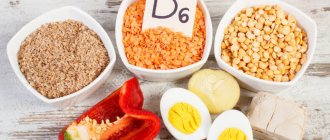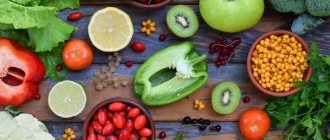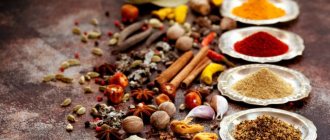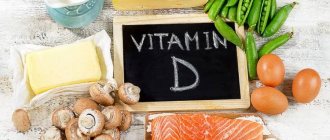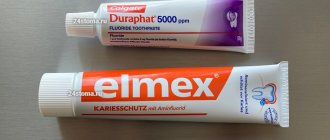Salmon
This nutritious fish is rich in several B vitamins. A 100-gram serving of cooked salmon contains (3):
- Thiamine (B1) : 18% of the RDI
- Riboflavin (B2) : 29% of RDI
- Niacin (B3) : 50% of RDI
- Pantothenic acid (B5) : 19% of the RDI
- Pyridoxine (B6) : 47% of the RDI
- Cobalamin (B12) : 51% of RDA
Additionally, salmon is a low-mercury fish that contains high amounts of omega-3 fatty acids, as well as protein and selenium (4).
Summary:
Salmon contains high amounts of riboflavin, niacin, B6 and B12, and is also a good source of thiamine and pantothenic acid. Additionally, it contains virtually no mercury and is rich in omega-3 fats and protein.
Signs of deficiency and excess of cyanocobalamin
Vitamin B 12 deficiency can cause anemia. The process of natural production of deoxyribonucleic acid is disrupted. A lack of cyanocobalamin may be associated with:
- refusal of meat and dairy foods;
- diseases of the gastrointestinal tract;
- taking anticonvulsants or birth control medications.
With a constant deficiency of cyanocobalamin, the process of hematopoiesis is disrupted, depression, insomnia, and loss of appetite occur. In particularly difficult cases, anemia is possible. At the first signs of illness, you should consult a doctor and undergo tests that will confirm a lack of vitamin.
Hypervitaminosis is less common; it is almost always associated with taking artificially synthesized drugs or chronic liver diseases. By eating a balanced diet, it is impossible to exceed the daily dose of cyanocobalamin.
Green leafy vegetables
Several green leafy vegetables contain high amounts of folate (B9). They are among the richest plant sources of folate (5, 6, 7, 8, 9):
- Spinach, raw : 41% of RDI per 85-gram serving
- Spinach, cooked : 31% of RDI per 85-gram serving
- Collard greens, cooked : 20% of the RDI per 85-gram serving
- Turnip tops, cooked : 25% of the RDI per 85-gram serving
- Lettuce, raw : 29% of the RDI per 85-gram serving
Notably, some folate is destroyed by heat during cooking, and some may be released into the water in which vegetables are cooked. To minimize folate loss during cooking, steam green leafy vegetables until they are soft and tender (10, 11).
Summary:
Green leafy vegetables, especially spinach, kale, turnip tops and lettuce, are some of the best plant sources of folate. Eat them raw or steamed to retain most of the folate.
How to organize proper nutrition
Nutritionists recommend combining foods high in cyanocobalamin with vegetables and fruits rich in vitamin C. For example, freshly squeezed lemon juice can be poured over baked fish, and cranberry or lingonberry jelly can be served with meat. Black tea and coffee should be replaced with homemade berry juice or rosehip drink. The best cobalt-containing dessert is fresh strawberries, which can be eaten with milk or cream.
Those who do not eat meat or fish should focus on dairy products: low-fat cottage cheese, yogurt, milk.
Vitamin B 12 does not tolerate long-term cooking. It is better to steam or bake meat, liver, and fish. Those who love beef steaks should choose medium or medium doneness. The ideal option for a lack of cyanocobalamin is rare steak.
The simultaneous intake of folic acid and calcium will help improve the absorption of vitamin B 12.
The daily menu should include low-fat cottage cheese with sour cream, skim milk fortified with calcium, and natural cheese. Twice a week, meat or offal is introduced into the diet; at least once a week you should eat fatty fish, seafood or high-quality canned food in its own juice.
Liver and other by-products
Although organ meats are not particularly popular, they (especially liver) contain a huge amount of B vitamins. This applies to organ meats from a variety of animals and poultry, whether beef, pork, lamb, or chicken (12, 13, 14, 15).
For example, a 100-gram serving of beef liver contains (12, 16):
- Thiamine (B1) : 12% of the RDI
- Riboflavin (B2) : 201% of RDI
- Niacin (B3) : 87% of RDI
- Pantothenic Acid (B5) : 69% RDI
- Pyridoxine (B6) : 51% of the RDI
- Biotin (B7) : 138% of RDI
- Folate ( B9) : 65% of RDI
- Cobalamin (B12) : 1386% of RDI
If you are not used to the special taste and smell of liver or you simply do not like this product, try grinding it and mixing it with minced meat or adding various seasonings such as chili to it.
Summary:
Organ meats (especially liver) contain a huge amount of B vitamins. To make the liver more pleasant to smell and taste, chop it and add it to minced meat or use various seasonings.
Chemical properties and composition of vitamin B12
To be precise, this is not one substance, but several compounds combined into one general group and designated by a letter of the Latin alphabet. These biologically active components contain cobalt, which is necessary for the normal functioning of many processes in our body:
- hematopoiesis;
- regeneration of cells and tissues;
- prevention of disorders in the functioning of the pancreas;
- regulation of the production of the hormone adrenaline.
Vitamin B12 itself, the lack of which can have a detrimental effect on health, from a chemical point of view, is two varieties of the same cobalamin molecule. Both options are also called vitamers. Their correct designations among scientists and doctors are cyanocobalamin and hydroxocobalamin.
Not all components of this substance can have a beneficial effect on your health and general condition. Only its active forms are of benefit to humans. These compounds are formed from vitamers - methylcobalamin and deoxyadenosylcobalamin. When we tell you what foods contain vitamin B12, we mean these active forms. Such names are not easy for an ordinary person not involved in chemistry to remember, so in the future, throughout the entire text of the article, we will use the usual and familiar letter name of the biologically active substances of this group.
Eggs
One large egg contains 33% of the RDA for biotin, distributed between the yolk and white. In fact, eggs are one of the best sources of biotin—only liver contains more (16, 17).
Eggs also contain lower amounts of other B vitamins. One large (50 grams) cooked egg contains (16, 18):
- Riboflavin (B2) : 15% of RDI
- Pantothenic acid (B5) : 7% of the RDI
- Biotin (B7) : 33% of RDI
- Folate (B9) : 5% of RDI
- Cobalamin (B12) : 9% of the RDI
Keep in mind that raw egg whites contain avidin, a protein that binds to biotin and prevents its absorption in the intestines if you regularly eat a lot of raw egg whites. Cooking eggs inactivates avidin and reduces the risk of food poisoning (17, 19).
If you don't eat eggs, meat, or other animal products, you can meet your biotin needs by consuming foods like vegetables, fruits, nuts, seeds, and whole grains, which contain small amounts of biotin (16, 17).
Summary:
Eggs are the main source of biotin, second only to liver. One large cooked egg contains 1/3 of the RDA for biotin.
Causes of vitamin A deficiency in the body
If there is a deficiency of vitamin A in the body of a healthy person, several factors may affect this:
- Low quality of consumed products. This is often observed in the presence of nitrates in food products (tomatoes, carrots, herbs, etc.). Remember, the better, more natural and fresh the products, the more required nutrients they contain.
- Disruption of the digestive system. Such disorders include gastritis, pancreatitis, colitis and cholelithiasis. In this case, you will need to increase the dose of the vitamin, after consulting with your doctor, who will be able to create an individual diet.
- Improperly balanced diet. Frequent consumption of fast foods, semi-finished products, fried foods, not fresh foods, and weekly meals. Remember that foods and foods that are prepared immediately before consumption are better digested, and not those that sit in the refrigerator for several days and are reheated. All this will contribute to a decrease in the amount of vitamin A and its ineffectiveness for the body.
Milk
One cup (240 ml) of milk contains 26% of the RDA for riboflavin, as well as smaller amounts of other B vitamins (20):
- Thiamine (B1) : 7% of the RDI
- Riboflavin (B2) : 26% of RDI
- Pantothenic acid (B5) : 9% of the RDI
- Cobalamin (B12) : 18% of the RDI
Research shows that milk and other dairy products tend to be the main source of riboflavin for people, followed by meat and grains (21, 22).
For example, an observational study of more than 36,000 European adults found that dairy products provided 22–52% of the RDA for riboflavin (22).
Like other animal products, milk is also a good source of B12, supplying 18% of the RDA per 1 cup (240 ml) (19).
What's more, you absorb B12 best from milk and other dairy products, with absorption rates ranging from 51-79% (23).
Summary:
Milk and other dairy products provide many people with about a third of their daily requirement of riboflavin, with just 1 cup (240 ml) consumed. Milk is also a good source of vitamin B12, which is also highly absorbable.
Signs of Vitamin A Deficiency
If there is a lack of vitamin A in the body, so-called “night blindness” can occur. But, today, such a phenomenon is extremely rare, since a critical amount of retinol is needed. As a rule, this happens with completely unsatisfactory nutrition, almost hunger.
The first signs that the human body does not receive the required amount of vitamin (hypovitaminosis):
- the appearance of wrinkles at an early age, dry skin, partial peeling;
- decreased vision, drying out of the mucous membrane, deterioration in the quality of vision in the dark;
- frequent cases of infectious diseases;
- weakened immunity.
Beef
Eating beef can make a big contribution to your B vitamin intake.
An observational study of the dietary habits of approximately 2,000 people in Spain found that the main sources of thiamine, niacin, and pyridoxine were meat and meat products (21).
Here's the amount of B vitamins in a 100-gram serving of beef fillet (24):
- Thiamine (B1) : 5% of the RDI
- Riboflavin (B2) : 8% of RDI
- Niacin (B3) : 39% of RDI
- Pantothenic acid (B5) : 6% of the RDI
- Pyridoxine (B6) : 31% of the RDI
- Cobalamin (B12) : 29% of the RDI
Summary:
Beef contains large amounts of vitamins B3, B6 and B12. A 100-gram serving of fillet contains about a third of the RDA for each of these vitamins, in addition to smaller amounts of other B vitamins.
Vitamin B 12 and its functions
Vitamin B 12 or cyanocobalamin is a water-soluble substance synthesized by intestinal microflora. It is responsible for:
- functioning of the nervous system;
- hemoglobin level in the blood;
- red blood cell maturation;
- regulation of blood pressure;
- stimulation of carbohydrate and fat metabolism;
- production of bile salts.
A valuable source of vitamin B 12 is beef and beef by-products.
The artificial vitamin was obtained in 1948 from beef liver. Capsules and injection solutions are widely used for the treatment and prevention of anemia, neuralgia, and metabolic disorders.
Cyanocobalamin in combination with folic acid is necessary for normal hematopoiesis, it activates blood clotting, reduces irritability, and stimulates performance. The substance improves the functioning of the liver and spleen, strengthens the skin, and prevents inflammatory and tumor processes. Vitamin B 12 can influence reproductive function in men; when taken simultaneously, it can enhance the effect of certain medications.
Oysters, clams and mussels
Oysters, clams and mussels are an incredible source of B12 and an excellent source of riboflavin. They also contain lower amounts of thiamine, niacin and folate.
A cooked 100g serving contains (25, 26, 27):
| B vitamins | Oysters, % of RDI | Shellfish, % of RDI | Blue mussels, % of RDI |
| Thiamine (B1) | 8% | 10% | 20% |
| Riboflavin (B2) | 26% | 25% | 25% |
| Niacin (B3) | 18% | 17% | 15% |
| Folate (B9) | 4% | 7% | 19% |
| Cobalamin (B12) | 480% | 1648% | 400% |
*Content of B vitamins in shellfish: Table
These shellfish also contain high amounts of protein and several minerals, including iron, zinc, selenium and manganese. They are also a good source of omega-3 fatty acids (25, 26, 27).
Summary:
Oysters, clams and mussels contain more than four times the RDA for vitamin B12 per serving. They are also rich in riboflavin and contain lower amounts of thiamine, niacin and folate.
Where to order vitamins with delivery
A large selection of vitamins is presented in our network of online pharmacies “Aptstore”. There are both mono and multivitamin complexes available. All supplements are of high quality, so they are a good addition to vitamins of natural origin.
In the online pharmacy "Aptstore" you can quickly place your order. To do this, you need to go through a simple procedure for registering your personal account. Then add the required items to your cart. And choose delivery to one of our branches. Delivery is possible in Moscow and Odintsovo. You can find out how much vitamin preparations cost from the catalogue.
The phone number is also listed on our website. By calling it, you can also place an order and clarify delivery conditions or information about the product.
If the product you need is out of stock, you have the opportunity to pre-order. When it arrives at the warehouse, our employees will inform you about it.
Legumes
Legumes are an excellent source of folate. They also provide small amounts of other B vitamins, including thiamine, riboflavin, niacin, pantothenic acid, and B6 (28).
Here's how much folate is in an 85-gram serving of various types of cooked legumes (29, 30, 31, 32, 33, 34, 35, 36):
- Black beans : 32% of RDI
- Chickpeas : 35% of RDI
- Edamame (immature soybeans) : 60% of RDI
- Green peas : 12% of RDI
- Red beans : 29% of RDI
- Lentils : 45% of RDI
- Pinto beans : 37% of RDI
- Roasted soybeans : 44% of RDI
Folate (or its synthetic form called folic acid) is important in reducing the risk of certain birth defects. Note that the RDI values above are based on the recommended daily intake of 400 mcg, but pregnant women need 600 mcg daily (37).
Summary:
Most legumes, such as pinto beans, black beans and lentils, are rich in folate, a B vitamin that is important in reducing the risk of some birth defects.
The benefits of vitamin A for the human body
By adhering to the daily intake of nutrients in the diet, a beneficial effect on the human body will be observed. Namely:
- helps improve vision, normalize the condition of the cornea and tear fluid;
- takes an active part in skin regeneration, slows down the aging process;
- normalizes the stable functioning of the liver, increases its efficiency;
- Boosts immunity and protects against infectious diseases.
Chicken and turkey
Turkey meat and chicken contain a lot of niacin and pyridoxine. White meat, such as breast, contains more of these two vitamins than dark meat (such as thigh) as shown in the table below.
A 100-gram serving of cooked, skinless chicken or turkey contains (38, 39, 40, 41):
| B vitamins | Chicken breast, % of RDI | Turkey breast, % of RDI | Chicken dark meat, % of RDI | Dark turkey meat, % of RDI |
| Riboflavin (B2) | 7% | 8% | 13% | 15% |
| Niacin (B3) | 69% | 37% | 33% | 17% |
| Pantothenic acid (B5) | 10% | 7% | 12% | 14% |
| Pyridoxine (B6) | 30% | 28% | 18% | 19% |
| Cobalamin (B12) | 6% | 7% | 5% | 7% |
*Content of B vitamins in chicken and turkey meat: Table
If you remove the fatty skin of poultry to cut calories, you shouldn't worry, since most B vitamins are found in the meat, not the skin (42, 43).
Summary:
Chicken and turkey (especially white meat) are rich in vitamins B3 and B6. Poultry also provides lower amounts of riboflavin, pantothenic acid and cobalamin. Most of the nutrients are found in the meat, not the skin.
Yogurt
Yogurt has high levels of riboflavin and B12. Although nutrient amounts vary by brand, a serving of yogurt contains the following amounts of B vitamins on average (44, 45, 46, 47):
| B vitamins | Regular yogurt, % of RDI per 170 g | Vanilla yogurt, % of RDI per 170 g | Greek yogurt, % of RDI per 170 g | Frozen vanilla yogurt, % of RDI per 95 g |
| Riboflavin (B2) | 18% | 26% | 36% | 20% |
| Cobalamin (B12) | 26% | 35% | 53% | 11% |
*Content of B vitamins in different types of yogurt: Table
Keep in mind that when flavored, most frozen and refrigerated yogurts also contain 3-4 teaspoons of added sugars per serving. So consume them in moderation (45, 46, 47).
You can also sometimes find many dairy yogurt alternatives in stores, such as yogurt made from fermented soy milk, almond milk, and coconut milk. However, these foods (unless fortified) are generally not good sources of riboflavin or B12 (46).
Summary:
Yogurt is naturally rich in vitamins B2 and B12, but plant-based alternatives are not good sources of these vitamins unless further fortified. Limit your consumption of yogurt with sugar.
Nutritional and brewer's yeast
Nutritional yeast and brewer's yeast are inactive, meaning you cannot use them to make bread. Rather, people use them to improve the taste and nutritional properties of dishes.
These yeasts naturally contain B vitamins and are often fortified with them (especially nutritional yeast). If they have added nutrients, you will see them in the ingredient list on the label.
Here's the B vitamin content of 2 tablespoons (16 to 30 grams) of these two types of yeast, although these values vary by brand (48, 49):
| B vitamins | Nutritional yeast, % of RDI | Brewer's yeast, % of RDI |
| Thiamine (B1) | 640% | 80% |
| Riboflavin (B2) | 570% | 90% |
| Niacin (B3) | 280% | 50% |
| Pantothenic acid (B5) | 10% | 6% |
| Pyridoxine (B6) | 480% | 40% |
| Folate (B9) | 60% | 15% |
| Cobalamin (B12) | 130% | 5% |
*Content of B vitamins in nutritional and brewer's yeast: Table
Vegetarians and vegans typically use nutritional yeast because it's fortified with B12, which is hard to get if you don't eat animal products (50).
The nutty and cheesy flavor of nutritional yeast also makes it popular as a seasoning. Brewer's yeast, however, can be bitter and may be better suited for mixing into foods such as cocktails, salad dressings, or soups.
Summary:
Nutritional yeast and brewer's yeast contain large amounts of B vitamins, but a significant portion of these vitamins in nutritional yeast, including B12, are added. These products can be used to enhance the taste or add nutrients to other foods.
Vitamin B12: indications for use
This substance in a certain volume and quantity is useful to everyone, without exception, for the normal functioning of vital organs and systems, and maintaining a healthy state of the body. There are also cases when its use is not only recommended, but also necessary to prevent the risk of developing serious diseases. Here are the most common situations when it is necessary to make up for the B12 deficiency:
- Addison-Beermer disease;
- various types of anemia: chronic, caused by iron deficiency or toxic substances;
- liver diseases: failure, cirrhosis;
- treatment of the consequences of alcoholism
- skin diseases: psoriasis, dermatitis
- neuroses;
- atherosclerosis;
- arthritis;
The substance has homeopathic and metabolic effects, has a positive effect on the liver, nervous system and accelerates regeneration. It can stop the development of these diseases and prevent the risk of complications. The drugs are available in various forms, and you can find many options in pharmacies. There are tablets, liquids and concentrated injection solutions. Each type has its own purpose and certain limitations. Without the advice of a specialist, it is difficult to navigate them and choose the right one, so be sure to consult with your doctor before you start taking them. He will tell you and explain in detail which form is right for you, help you decide on the dosage and give recommendations on how best to use the drug: subcutaneously, intravenously or intramuscularly.
Pork
Like other meats, pork contains high levels of several B vitamins. It is especially high in thiamine, which is low in beef.
A 100g serving of pork tenderloin contains (51):
- Thiamine (B1) : 69% of RDI
- Riboflavin (B2) : 24% of RDI
- Niacin (B3) : 24% of RDI
- Pantothenic acid (B5) : 9% of the RDI
- Pyridoxine (B6) : 27% of the RDI
- Cobalamin (B12) : 14% of the RDI
To keep pork healthy, choose pork tenderloin, which contains much less fat and calories than fatty meats (52).
Summary:
Pork is especially rich in thiamine, riboflavin, niacin and B6. Pork tenderloin contains much less fat and calories than lard meat.
Enriched Cereals
Breakfast cereals often contain added vitamins, including B vitamins. Check the ingredient list for them (53).
The B vitamins most commonly added to grains are thiamine, riboflavin, niacin, B6, folate, and B12. Here are the amounts present in several popular brands (54, 55, 56):
| B vitamins | Cheerios, % of RDI per 28 g | General Mills, Total, % of RDI per 30 g | Raisin Bran, % of RDI per 59 g |
| Thiamine (B1) | 25% | 100% | 25% |
| Riboflavin (B2) | 2% | 100% | 25% |
| Niacin (B3) | 25% | 100% | 25% |
| Pantothenic acid (B5) | — | 100% | — |
| Pyridoxine (B6) | 25% | 100% | 25% |
| Folate (B9) | 50% | 100% | 50% |
| Cobalamin (B12) | — | 100% | 25% |
*Content of B vitamins in popular breakfast cereal brands: Table
Keep in mind that many fortified breakfast cereals contain large amounts of added sugars and refined grains. Choose a product that has less than 5 grams of sugar per serving and a whole grain, such as whole wheat or whole oats, listed as the first ingredient.
Summary:
Thiamine, riboflavin, niacin, folate, B6 and B12 are often added to breakfast cereals. Some contain up to 100% of the RDA for these vitamins. However, it is important to choose breakfast cereals made from whole grains with minimal added sugar.
Signs of excess
Although there are few cases where vitamin A is absorbed in greater quantities than necessary, they still exist. Hypervitaminosis was previously observed in residents of the North who ate bear meat every day. The liver of these animals contains excessive amounts of vitamin A.
Important! With an excess of vitamin, problems are observed not only with the digestive system, but also with disorders of the nervous system.
Today, cases of consuming large amounts of vitamin A are possible when a person drinks carrot juice every day in excess of the required norm, wanting to saturate the body with useful substances. After this, carotene accumulates in the dermis, resulting in a yellowish color of the skin. The shade becomes especially noticeable on the palms and heels. If you follow the norms of consuming foods containing vitamin A in your diet, skin color will be restored within a few weeks.
Trout
The meat of a freshwater fish called trout is rich in several B vitamins.
A cooked 100g serving of trout contains (57):
- Thiamine (B1) : 28% of the RDI
- Riboflavin (B2) : 25% of the RDI
- Niacin (B3) : 29% of RDI
- Pantothenic acid (B5) : 22% of the RDI
- Pyridoxine (B6) : 12% of the RDI
- Cobalamin (B12) : 125% of RDA
In addition, trout is an excellent source of protein, rich in omega-3 fats, and low in mercury (57, 58).
Summary:
Trout contains a lot of thiamine, riboflavin, niacin, pantothenic acid and vitamin B12. It also contains adequate amounts of protein and omega-3 fats.
Sunflower seeds
Sunflower seeds are one of the best plant sources of pantothenic acid. This B vitamin gets its name from the Greek word “pantos,” which means “everywhere,” because it is found in most plant and animal foods, but usually only in small quantities (59).
It is noteworthy that 28 grams of sunflower seeds contain 20% of the RDI for pantothenic acid. Sunflower seeds are also a good source of niacin, folate, and B6 (60).
Sunflower oil is an excellent source of pantothenic acid.
Here is a comparison of the B vitamin content of sunflower seeds and sunflower oil (60, 61):
| B vitamins | Sunflower seeds, % of RDI per 28 g | Sunflower oil, % of RDI per 2 tablespoons (32 g) |
| Niacin (B3) | 10% | 8% |
| Pyridoxine (B6) | 11% | 12% |
| Pantothenic acid (B5) | 20% | 22% |
| Folate (B9) | 17% | 18% |
*Content of B vitamins in sunflower seeds and sunflower oil: Table
Summary:
Sunflower seeds and sunflower oil are among the richest plant sources of pantothenic acid, while this B vitamin is found only in small amounts in other foods.
Summarize
- Consuming adequate amounts of eight B vitamins helps you improve the quality of your health.
- Some top sources of B vitamins include: meat, liver, seafood, poultry, eggs, dairy products, legumes, green leafy vegetables, seeds and fortified foods such as breakfast cereals and nutritional yeast.
- If you limit your intake of some of the food groups listed above due to allergies or diet, your risk of B vitamin deficiency may increase.
- By including some of these 15 foods rich in B vitamins in your diet, you can avoid deficiency and improve your diet.
B vitamins
Why does the body need vitamin B12?
This substance plays a significant role in all vital processes occurring in our body. It’s not for nothing that hypovitaminosis, a lack of vitamins, is considered a serious disorder that doctors advise to eliminate immediately. The full list of functions that this group of connections performs is very large; here we will list only the most important and basic:
- Regulates the production of red blood cells: promotes formation, prevents their destruction and shortage.
- Positively affects the process of hematopoiesis.
- Promotes complete absorption of protein by the body.
- Improves tissue regeneration of the liver, kidneys, and heart.
- Prevents the development of diseases in these organs.
- Protects the nervous system from destruction and the harmful effects of external and internal adverse factors.
- Preventing the occurrence of anemia.
- Normalizes the functioning of enzymes.
- Activates cell division.
It is especially worth noting its ability to cover nerve cells with the myelin sheath, which is necessary for their complete and reliable protection. This is a unique function of vitamin B12. Other substances are not able to form, form and maintain the presence of this shell. This property of B12 can be a real salvation for you if your work and lifestyle involve constant nervous tension and stress. By taking your daily dose of the vitamin, you will protect yourself from depression, depression, irritability, mood swings and aggression, which can so often be found among residents of modern large cities.
People working in leadership positions who are under stress due to a high degree of responsibility and a large volume of tasks are especially susceptible to nervous disorders. This is also true for those who are exposed to the human factor: teachers, doctors, service workers. It would also be useful to take preventive measures for students during the period of taking exams and preparing for them.
